Often a winch is mounted to a column and used for utility rigging purposes in a general work area. With limited headroom and access for other material handling devices such as forklifts, the rigging crew is offered few alternatives.
Here a crew must move a heavy piece of machinery, and they've decided not to jack and roll the load. Skidding is their selected technique, and they are anticipating the tensions at all rigging points.
Using Panels 4 & 5 from ITI Bookstore's Journeyman Rigger's Reference Card, see if you can help determine the tensions at points A through G. As a bonus, what is the approximate horizontal loading at the column base to which A and D are attached? For calculation purposes, assume no sheave bearing friction. (Answers to this workshop can be found below.)
This crew may decide to use a different load moving process once they calculate the tensions (block loads) involved. Do they really appreciate the consequences if the load skids across an exceptionally rough area and starts to hang-up, providing 1.5-2 times the normal coefficient of friction? Maybe they should at least consider putting soap flakes or grease under the wood runners to help reduce the required force to move the load.
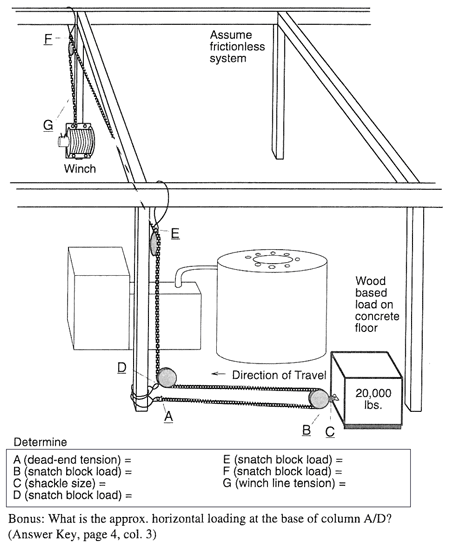
Journeyman Rigger's Reference Card Panel 4
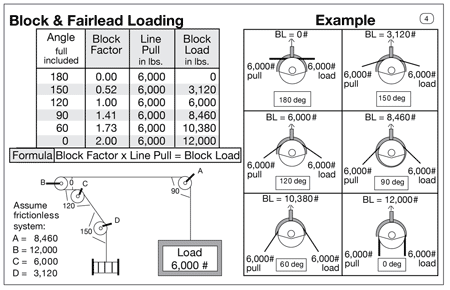
Journeyman Rigger's Reference Card Panel 5
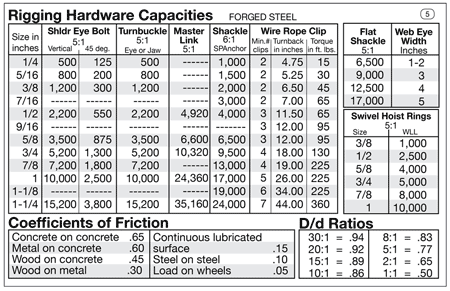
Happy trails to all my crane and rigging friends,
Mike Parnell
ITI-Field Services
P.S. This article was originally published in The Professional Rigger Newsletter,.
Answers:
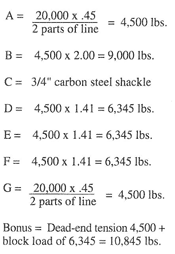



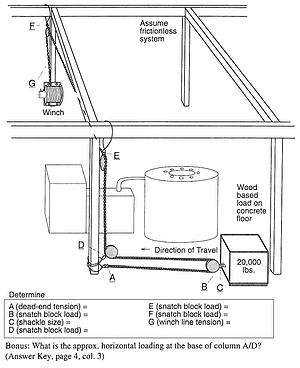
COMMENTS